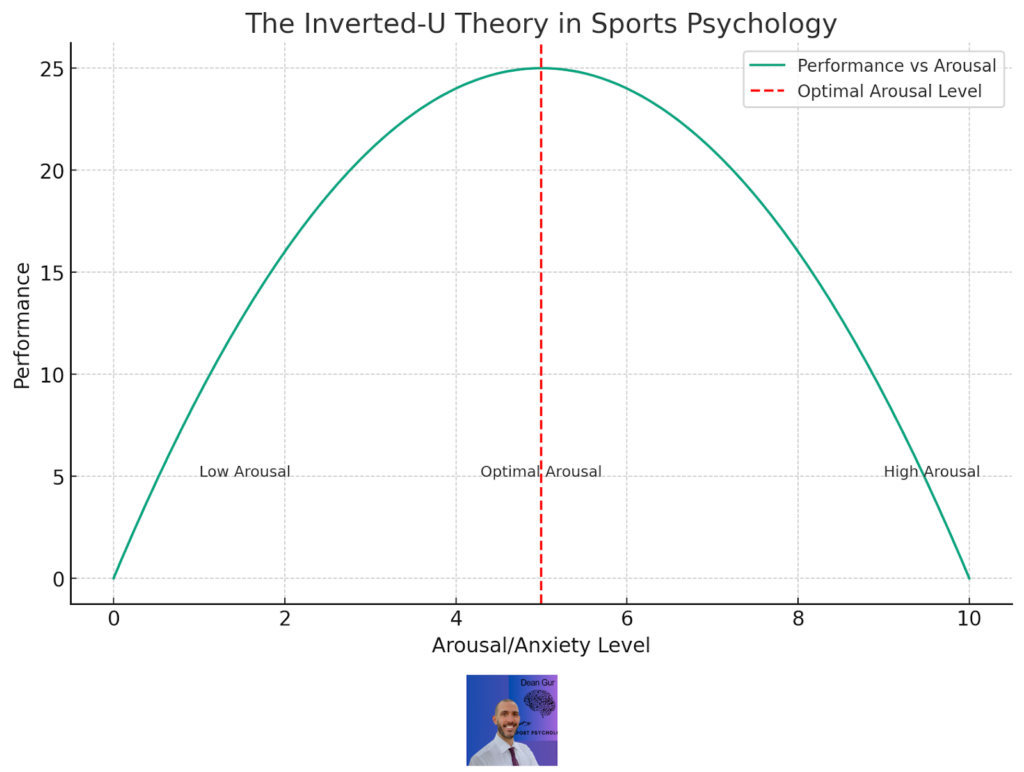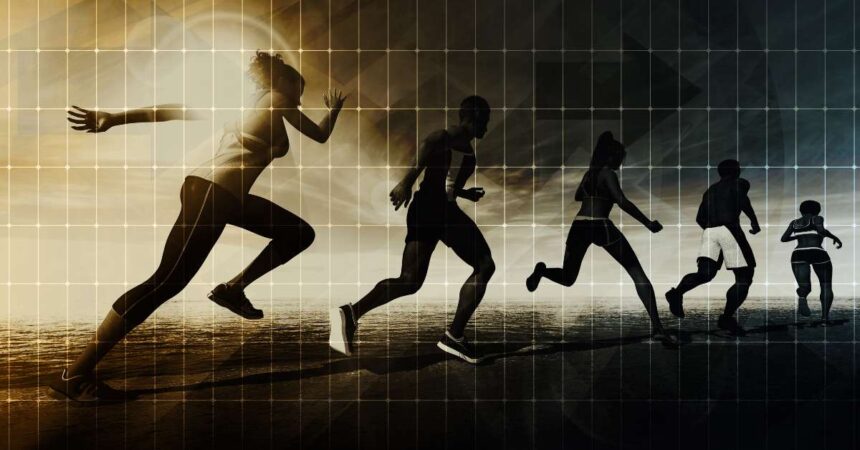Why do some athletes dazzle in practice sessions only to stumble during the real game? Why does that extra hour of skill-honing not always translate to success on the field? The answers may lie in a psychological concept known as the Inverted-U theory.
The Curve That Explains It All
Being an athlete is a tricky business. You’ve got to have the physical skills, the technical know-how, and most importantly, the mental toughness. The pressure’s on, and it can either launch you into stardom or send you packing. That’s where the Inverted-U Theory comes in. It’s a psychological concept that looks at how your mental state impacts your game.
The Inverted-U theory is illustrated as a graph where the X-axis represents the level of arousal and the Y-axis marks the performance level. As arousal increases, so does performance – up to a point. Beyond a certain threshold, heightened arousal turns into anxiety, causing performance to drop significantly, thereby creating an inverted-U shape on the graph.

The Three Zones: Where Are You On Game Day?
- Low Energy Zone: At the far left, low levels of arousal lead to lackluster performance. It’s like playing a game without any competitive spark – there’s no excitement or energy.
- The Sweet Spot (AKA Optimal Arousal): In the middle, there’s a ‘sweet spot.’ This is where athletes are energized, focused, and in control. They’re motivated but not overwhelmed. It’s the zone where champions are made.
- Nervous Wreck Zone (AKA Choking): On the far right, excessive arousal causes performance to plummet. Anxiety takes over, leading to overthinking, stress, and mistakes.
Applying the Theory
How can athletes zero in on their optimal performance zone? The secret is in identifying what personally triggers you and understanding the unique responses that work in your favor. Athletes are different; while some excel with a surge of intensity, others perform better under calmer conditions. This is where coaches and sports psychologists come into play. They can guide athletes in pinpointing their ideal level of arousal, enabling them to better manage their mental state and consistently reach peak performance.
Conclusion
The Inverted-U Theory isn’t just a theory—it’s a playbook for unlocking your full athletic potential. Striking the right balance between too little and too much arousal isn’t just beneficial; it’s essential. This isn’t just about avoiding pitfalls; it’s about carving the path to athletic excellence. By collaborating with seasoned professionals to find your perfect level of intensity, you’re not just improving—you’re transforming. So, whether you’re on the field, the court, or the mat, understanding and applying the Inverted-U Theory doesn’t just set you up for success—it propels you toward unparalleled athletic greatness.







